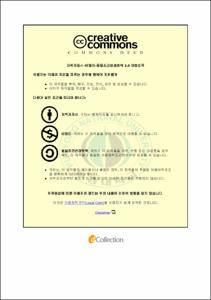에폭시와 아크릴 전착도료의 혼용성에 따른 물성 변화 연구
- Abstract
- The biggest weakness of epoxy electro-deposition coatings is the yellowing phenomena caused by benzene structure of bisphenol A. So the weather resistance is very weak. To compensate for this yellowing discoloration, acryl electro-deposition coatings have been developed. Compared with the epoxy electro-deposition coatings, however, acryl electro-deposition ones are relatively weak in corrosion resistance and mechanical properties. That is why continuous improvement is required.
The purpose of this study is intended to find the optimal formulation of epoxy and acryl electro-deposition coatings to compensate for their drawbacks. To investigate the effect on corrosion resistance and weather resistance, mechanical properties which the mix of epoxy and acryl electro-deposition coatings has, i conducted experiments of salt spray, QUV and mechanical (cupping, bending, impact) properties test.
When the resin ratio of acryl is 75%, the corrosion and the weather resistances are appropriately improved. The higher the ratio of acryl resin is, the more yellowing phenomena is decreased.
- Issued Date
- 2012
- Awarded Date
- 2012. 8
- Type
- Dissertation
- Publisher
- 부경대학교
- Affiliation
- 부경대학교 산업대학원
- Department
- 산업대학원 공업화학학과
- Advisor
- 문명준
- Table Of Contents
- 제 1 장. 서론 1
1-1. 에폭시와 아크릴 전착도료의 사용 현황 1
1-2. 에폭시와 아크릴 전착도료의 장‧단점 2
제 2 장. 이론적 배경 3
2-1. 전착 도장의 원리 3
2-2. 전착도료 Mechanism. 7
2-2-1. 에폭시 전착 Mechanism 7
2-2-2. 아크릴 전착 Mechanism 11
제 3 장. 실험방법 13
3-1. 도료 Specification 비교 13
3-2. 도료 제조 14
3-2-1. 아크릴 전착도료 제조 14
3-2-2. 에폭시 전착도료 제조 14
3-3. 도료 혼용성 분석 16
3-3-1. NV(Solid%)분석 방법 16
3-3-2. P/B Ratio 분석 방법 17
3-3-3. pH, Conductivity 분석 방법 18
3-3-4. 표면장력 측정 방법 19
3-4. 시험편제작 20
3-4-1. 전처리 시험편 20
3-4-2. 도료 혼용성별 전압변화에 의한 기준 도막 작성 방법 21
3-5. 도막의 X-cut시험에 의한 염수 분무성 측정 방법 25
3-6. QUV 시험에 의한 촉진 내후성 측정 방법 26
3-7. 기계적 물성 시험 방법 27
3-7-1. 신장성(Cupping) 27
3-7-2. 굴곡성(Bending) 28
3-7-3. 충격성(Impact) 29
제 4 장. 결과 및 고찰 30
4-1. 전착도료 혼용성 분석 30
4-1-1. 전착도료 혼용성별 분석 30
4-1-2. 용제 및 표면장력의 변화 31
4-2. 전착도료 혼용성별 도막 표면 분석 32
4-2-1. DSC분석에 의한 유리전이 온도(Tg) 변화와 TGA에 의한 내열성 측정 32
4-2-2. SEM 분석 및 roughness 측정 35
4-3. 염수분무시험에 따른 내식성 변화 36
4-4. QUV 시험 전·후의 색차 변화 측정 40
4-5. 전착도료 혼용성별 기계적 물성 변화 44
4-5-1. Cupping 시험에 따른 신장성 변화 44
4-5-2. Bending 시험에 따른 굴곡성 변화 45
4-5-3. Impact 시험에 따른 충격성 변화 46
제 5 장. 결론 47
참고문헌 49
- Degree
- Master
- Files in This Item:
-
-
Download
 에폭시와 아크릴 전착도료의 혼용성에 따른 물성 변화 연구.pdf
기타 데이터 / 7.82 MB / Adobe PDF
에폭시와 아크릴 전착도료의 혼용성에 따른 물성 변화 연구.pdf
기타 데이터 / 7.82 MB / Adobe PDF
-
Items in Repository are protected by copyright, with all rights reserved, unless otherwise indicated.